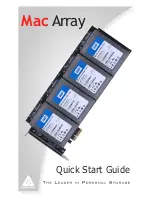
Chapter 1
GPIB Hardware
1-32
ni.com
Caution
Do
not
power-off the GPIB-ENET/1000 or disconnect the power supply while
updating the firmware. Doing so could damage the unit. The GPIB-ENET/1000 reboots
automatically when the update completes.
1.
Launch Measurement & Automation Explorer.
2.
Expand
Devices and Interfaces
and
Network Devices
.
3.
Right-click the GPIB-ENET/1000 to be updated and select
Device
Configuration
. The GPIB-ENET/1000 Configuration Web page
should launch.
4.
On the Web page, click
Update
under
Firmware
in the
Details
section.
READY LED Signaling
The
READY
LED blinks red slowly in a distinct pattern to alert you of
internal errors. Use this section to interpret and record the pattern that the
READY
LED flashes, and then contact National Instruments.
Note
By recording the
READY
LED status messages before calling National
Instruments, you can save yourself time, and the Product Support Department can answer
your questions more accurately and efficiently. Do not switch off power to your
GPIB-ENET/1000 before recording the flashing
READY
LED pattern.
READY
LED signaling can report up to 81 different errors. The errors are
numbered from 11 to 99 and are reported through sequences of
READY
LED flashes.
Note
There is no zero in any error message. This means that error message numbers 0–10,
20, 30, 40, 50, 60, 70, 80, and 90 are not possible.
Step 1. Count the Long Flashes
A three-second interval, during which the
READY
LED is off, separates
each repetition of the sequence. The sequence begins with a series of long
one-second flashes—that is, one second red, one second off. These long
flashes represent the digit in the tens column. There can be one to nine long
flashes, which represent digits 1 through 9. For example, one long flash
represents the digit 1 in the tens column, and nine long flashes represent the
digit 9 in the tens column.














































